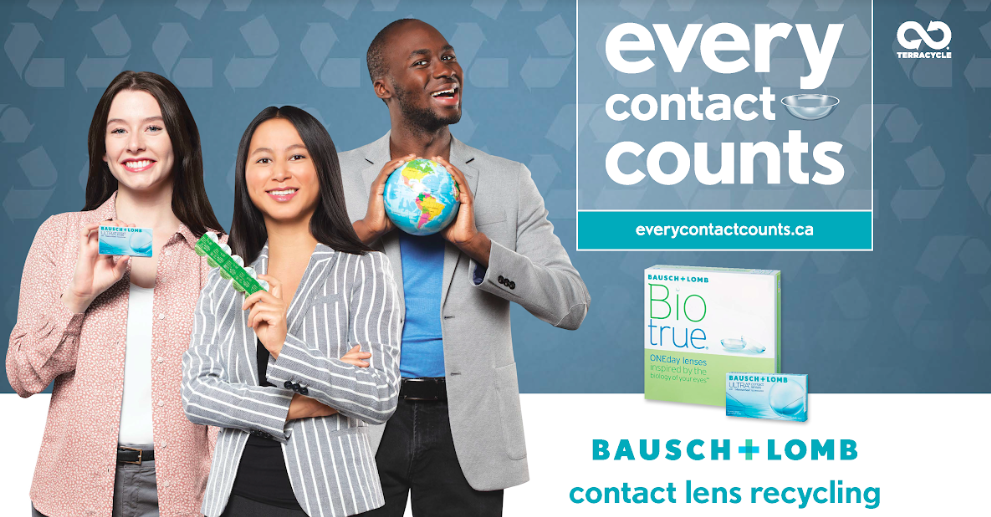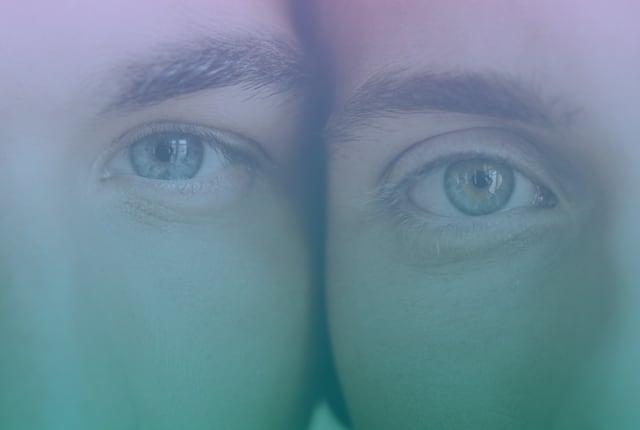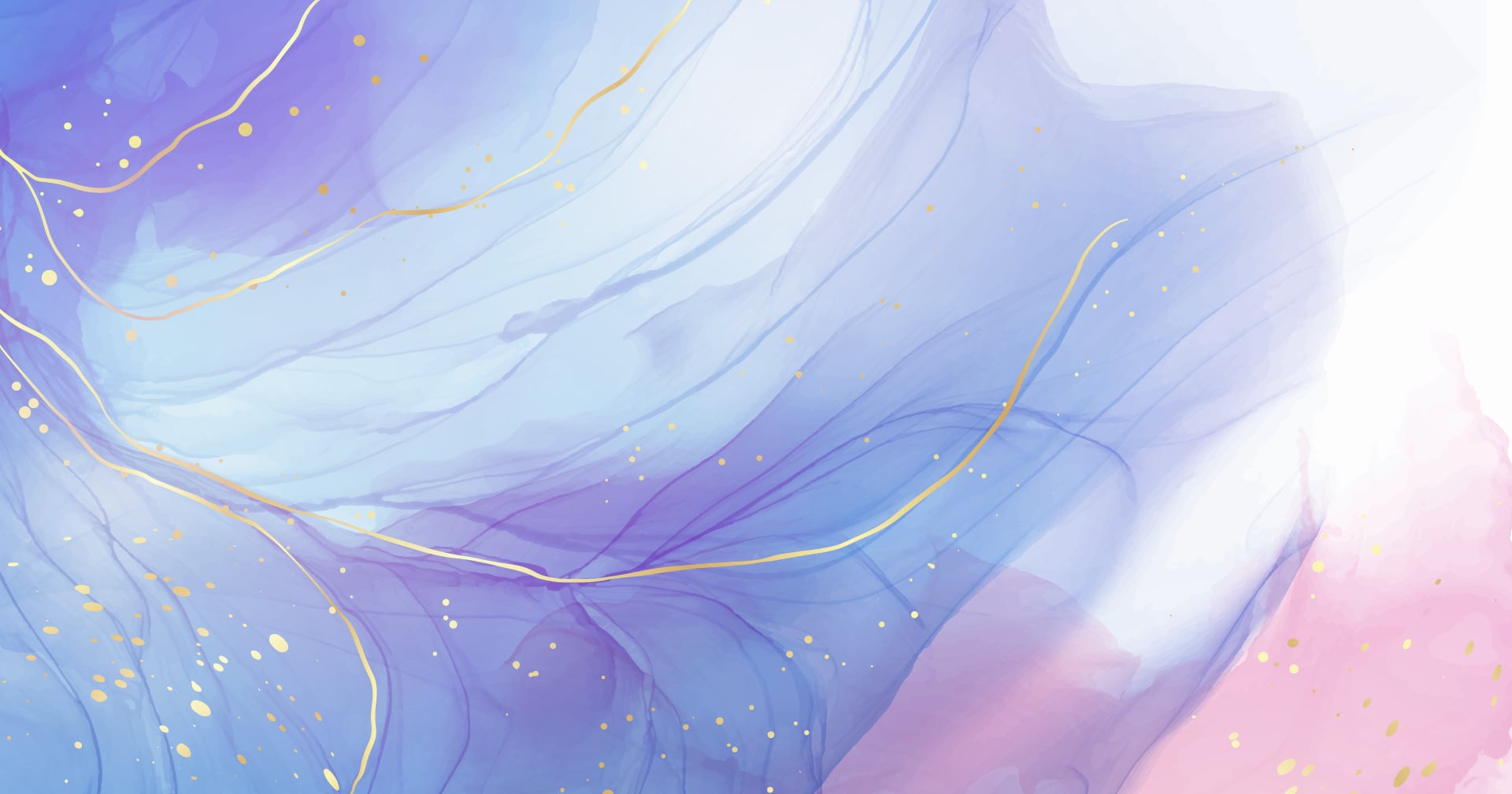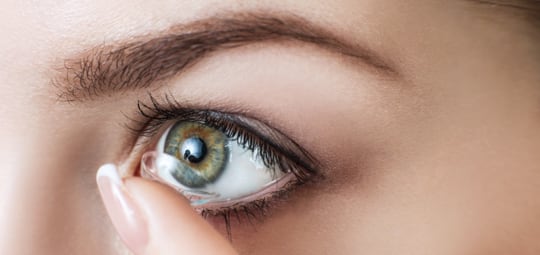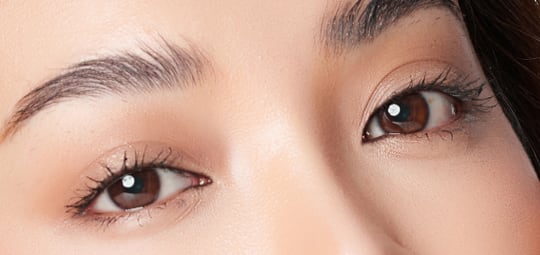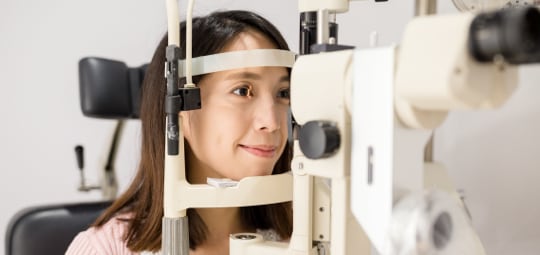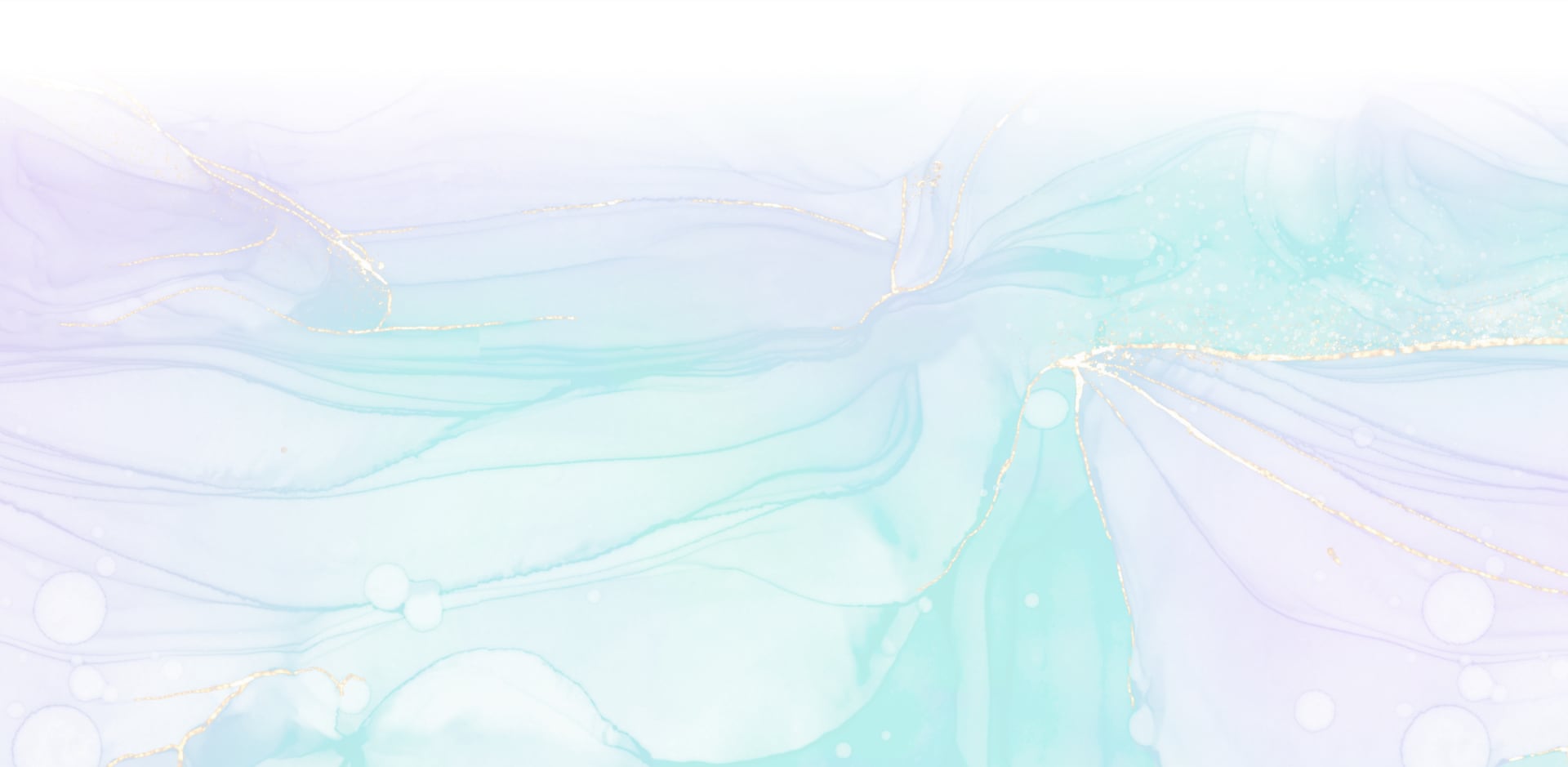For contact lens wearers, there’s just a bit more effort that goes into their every day. Making sure you’ve got enough contacts and solution, ensuring you’ve got your spare glasses in case of emergency. Maintaining eye health can require a bit more vigilance as well. A tiny scratch can mean glasses for a few days or even weeks. Depending on the type of contact lens you use can mean changing out your lenses daily, biweekly, or monthly.
Regardless of the length of use for your brand of contact lens, it’s important to know you have some options for lens disposal that can leave less of an impact on the environment. Did you know that more than 290 million contact lenses end up in Canadian landfills or waterways every year? Contact lens recycling programs can help reduce landfill waste as it allows for the proper disposal and recycling of packing material and lenses. But why should you participate? And just how easy is it to help out our planet by recycling your contact lens materials? We’ve got a few answers to your frequently asked questions below.
Contact Lens Recycling – Things to Know
Bausch and Lomb has launched an extensive contact lens recycling program to help keep the by products of contact lens use out of landfills. One of the biggest environmental concerns with single use packaging is how irresponsible and wasteful it is. Contact lens users, especially those using a daily disposable lens, produce a large number of foil and blister pack waste. Thanks to Bausch and Lomb, this waste can now be sent to them for recycling. Before this recycling system was put in place, contact lens plastic waste unfortunately got filtered out from normal plastic recycling waste in processing plants because of their small size.
What Type of Products Can Be Recycled?
Thanks to Bausch and Lomb, their contact lens recycling program is incredibly inclusive. As a result, you can recycle all brands of contact lenses along with their used top foil, and empty blister packs. The program is not exclusive just to Bausch and Lomb lenses! Don’t send in unused blister packs. You won’t need to wash any of your used materials, and you’ll be able to drop your contact waste off at your eye doctor or print out a label at Bauschrecycles.com. If you print out a label, you’ll be able to schedule a pickup or you can drop it off at a local post office. Your package won’t have a weight limit, either, so you’ll be able to mail as many or as few as you’d like. Once received, your contact waste will be sorted and cleaned and recycled respectively.
What Does Bausch and Lomb do with Recycled Materials?
Bausch and Lomb, in collaboration with TerraCycle®, announced on Nov. 13th, 2019 that materials from the recycling program would be donated as custom training modules to the Guide Dog Foundation. The training materials are set to include tables, benches, waste stations and an agility ramp. All materials are made from used contact lens materials collected through the recycling program.
Participating in the contact lens recycling program can help reduce how much waste comes out of the disposable lens industry. Therefore, it leaves less of an environmental impact on this gorgeous planet we live on. Not only this, but recycling your contact lens materials helps to support a great cause.
We are proud to announce that Yonge & College Optometry is one of the first sites in Toronto to offer a recycling system for our patients’ contact lens waste. For more information, please call us on (647) 748-3937 or click here to request an appointment online.


